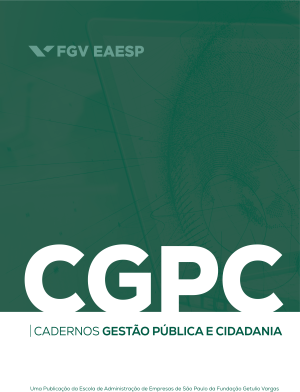Constitution, constitutional amendments and public policies: Unveiling government attention through constitutional changes
Main Article Content
Abstract
From its enactment in 1988 until 2018, the Brazilian Federal
Constitution underwent 105 changes through the approval of Constitutional Amendments. Given this high rate of amendments, this research aims to map and analyze the changes in the Constitution, focusing on the different types of sectoral policies targeted by these 105 amendments over 30 years. The study employs content analysis based on the Comparative Agendas Project (CAP) framework. The findings reveal that the Constitution expanded by more than 20% during this period. There was also an increase in policy regulations, particularly those aimed at guaranteeing various types of policies – primarily social policies – often at the expense of polity regulation. Finally, the conclusions highlight the importance of viewing the Federal Constitution as a locus for agenda formation, policy formulation, and the promotion of government priorities.
Downloads
Article Details

This work is licensed under a Creative Commons Attribution 4.0 International License.
Authors publishing in this journal agree to the following terms:
The authors have the copyright and grant the journal the right of first publication. The authors’ work is also licensed under the Creative Commons Attribution License (CC BY 4.0), allowing sharing its content since acknowledging authorship and first publication in this journal.
Authors are authorized to take on additional contracts separately for the non-exclusive distribution of the version of the work published in this journal since acknowledging authorship and first publication. For example, the authors may publish the content in institutional repositories or as a book chapter).
Authors are encouraged to distribute the publication online (e.g., in institutional repositories or on their personal webpage, among others), as this can lead to improvements and increase impact and citation of the published work. For more information, please check The effect of open access.
Cadernos Gestão Pública e Cidadania (CGPC) (Public Management and Citizenship Journal) is a journal committed to contributing to the protection of the author's rights. In this sense:
- Moral rights and rights of use of the article are secured to the author;
- It adopts the Creative Commons BY (CC-BY) license in all texts published;
- It uses similarity-detection software (iThenticate);
- The journal undertakes measures to fight plagiarism and ethical misconduct, in line with the guidelines of the Committee on Publication Ethics (COPE).
For more information, please see CGPC Ethics & Conduct.
References
Arantes, R. B., & Couto, C. G. (2008a, Setembro). Por que muda e como muda a Constituição? Problemas de controle sobre a agenda governamental. 32º Encontro Anual da ANPOCS. Caxambu, Minas Gerais.
Arantes, R. B., & Couto, C. G. (2008b). A Constituição sem fim. In S. Diniz & S. Praça (Orgs.), Vinte anos de Constituição (pp. 31-60). Paulus.
Arantes, R. B., & Couto, C. G. (2009a). Uma Constituição incomum. In M. A. R. de Carvalho, C. Araújo, & J. A. Simões (Orgs.), A Constituição de 1988: Passado e futuro.(pp.17-51) Hucitec.
Bardin, L. (2011). Análise de conteúdo. Carvalho, J. M. (2002). Cidadania no Brasil: O longo caminho. Civilização Brasileira. Edições 70.
Couto, C. G., & Arantes, R. B. (2006). Constituição, governo e democracia no Brasil. Revista Brasileira de Ciências Sociais, (61), 41-62. https://doi.org/10.1590/S0102-69092006000200003. DOI: https://doi.org/10.1590/S0102-69092006000200003
Elster, J. (2012). The optimal design of a Constituent Assembly. Cambridge University Press. DOI: https://doi.org/10.1017/CBO9780511846427.008
Lima, G. de M. (2016). Constitucionalização de políticas públicas e emendamento constitucional no Brasil (Tese de doutorado em Administração Pública e Governo, Fundação Getulio Vargas, Escola de Administração de Empresas de São Paulo).
Moraes, A. (2019). Direito Constitucional. Atlas.
Novelino, M. (2019). Curso de Direito Constitucional (15a ed.).Juspodivm.
Reis, F. W. (Junho, 1989). Estado, Economia, Ética, Interesses: Para a Construção Democrática do Brasil. Planejamento e Políticas Públicas, 1(1), 33-35. http://biblioteca.ijsn.es.gov.br/Record/3561
Silva, V. A. da. (2021). Direito Constitucional brasileiro. Universidade de São Paulo.
Souza, C. (2008). Regras e contexto: As reformas da Constituição de 1988. Dados – Revista de Ciências Sociais, 51, 791-823. https://doi.org/10.1590/S0011-52582008000400001. DOI: https://doi.org/10.1590/S0011-52582008000400001







